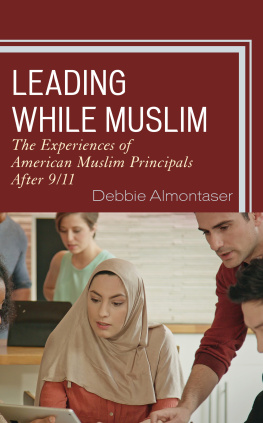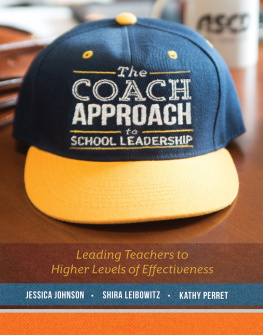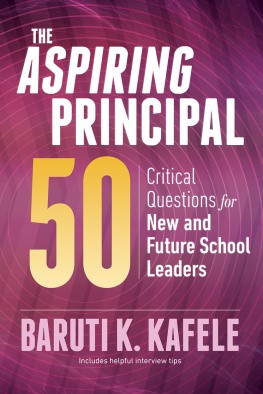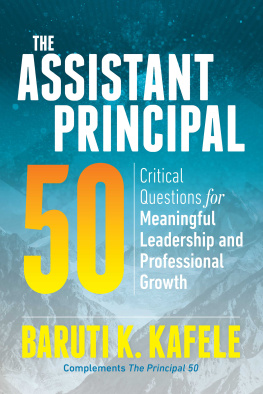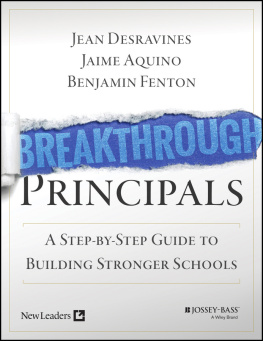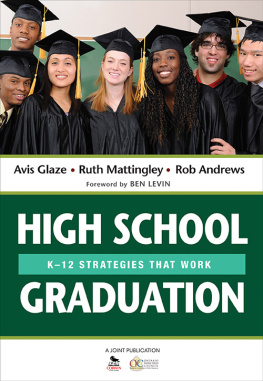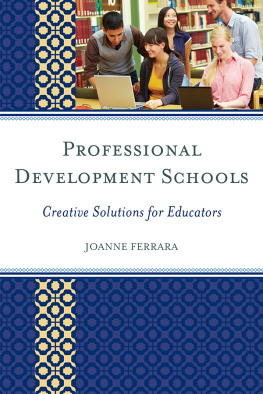From Good Schools to
GREAT
SCHOOLS
In memory of our good friends Jim Hilton and Larry E. Frase
From Good Schools to
GREAT
SCHOOLS
What Their Principals Do Well
Susan Penny Gray
William A. Streshly
Foreword by Marge Hobbs

Copyright 2008 by Corwin Press
All rights reserved. When forms and sample documents are included, their use is authorized only by educators, local school sites, and/or noncommercial or nonprofit entities that have purchased the book. Except for that usage, no part of this book may be reproduced or utilized in any form or by any means, electronic or mechanical, including photocopying, recording, or by any information storage and retrieval system, without permission in writing from the publisher.
Artwork by Dr. Chyll at Chyll Productions
For information:
 | Corwin Press
A SAGE Company
2455 Teller Road
Thousand Oaks, California 91320
www.corwinpress.com | SAGE India Pvt. Ltd.
B 1/I 1 Mohan Cooperative Industrial Area
Sage Publications Asia-Pacific Pte. Ltd.
Mathura Road, New Delhi 110 044
India |
SAGE Ltd.
1 Olivers Yard
55 City Road
London EC1Y 1SP
United Kingdom | SAGE Asia-Pacific Pte. Ltd.
33 Pekin Street #02-01
Far East Square
Singapore 048763 |
Printed in the United States of America
Library of Congress Cataloging-in-Publication Data
Gray, Susan Penny.
From good schools to great schools: What their principals do well/Susan Penny Gray, William A. Streshly.
p. cm.
Includes bibliographical references and index.
ISBN 978-1-4129-4898-2 (cloth)
ISBN 978-1-4129-4899-9 (pbk.)
1. School principalsUnited States. 2. Educational leadershipUnited States. 3. School management and administrationUnited States. I. Streshly, William A. II. Title.
LB2831.92.G73 2008
371.2011dc22 2007022028
This book is printed on acid-free paper.
07 08 09 10 11 10 9 8 7 6 5 4 3 2 1
| Acquisitions Editor: | Elizabeth Brenkus |
| Editorial Assistants: | Ena Rosen and Desire Enayati |
| Production Editor: | Melanie Birdsall |
| Copy Editor: | Alison Hope |
| Typesetter: | C&M Digitals (P) Ltd. |
| Proofreader: | Gail Fay |
| Indexer: | Sylvia Coates |
| Cover Designer: | Rose Storey |
| Graphic Designer: | Lisa Miller |
Contents
Marge Hobbs
List of Figures and Tables
Framework for the Highly Successful Principal
Criteria for Selection of Principals to Interview
Field Elementary School: API Similar Schools Rank
Range of Personality Exuberance of the Highly Successful and Comparison Principals
Bay View Elementary School: API Similar Schools Rank
Mission Elementary School: API Similar Schools Rank
Mountain High Elementary School: API Relative Rank and Similar Schools Rank
Pines Elementary School: API Similar Schools Rank
Eagle Elementary School: API Relative Rank and Similar Schools Rank
McRELs Balanced Leadership Framework Responsibilities, Average r, and Associated Practices
Relating Collins (2001) Leader Behaviors to Peters and Watermans ([1982] 2004) Principles of Leadership
Code Families
Foreword
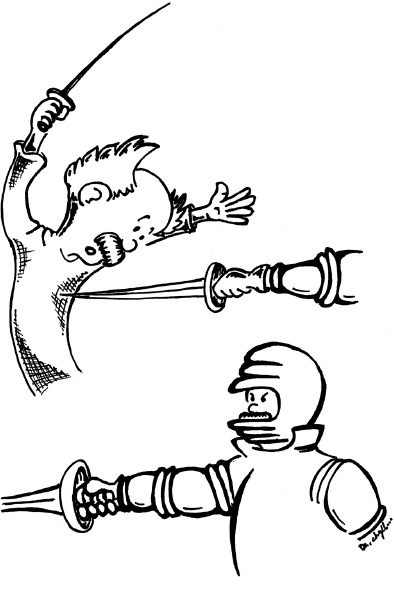
A competitive world has two possibilities for you: you can lose or, if you want to win, you can change.
Lester Thurow, former dean of the
MIT Sloan School of Management (1938)
W hen I first learned of the book Good to Great: Why Some Companies Make the Leapand Others Dont, by Jim Collins (2001), I wondered how schools and their leaders could use his research to improve the leadership in our public school system. The authors of this book have studied this question by looking closely at a sample of our very best school principals and comparing their behavior and characteristics with Collins research. What they learned was both surprising and challenging.
As members of the faculty at San Diego State University in Southern California, Susan Penny Gray and William A. Streshly prepare school administrators. They present in this volume evidence that supports a new paradigm for apprenticing school administratorsone that differs from the traditional model of unresearched best practices and standards. The book represents a research-based glimpse into research-based best practices. Grounding the concepts in a research format similar to the one Jim Collins used, the authors have made it their business to become informed about the best ideas and theories of leadership in schools. In this researched model, school site leaders can learn to look closely at their leadership through the experiences of super-star models and reflect on their own behaviors to move schools toward a more excellent school experience for their students. School leaders can use this book to inspire activities that transform their schools and reframe their professional behaviors.
Gray and Streshly maintain that the authors of the Interstate School Leaders Licensure Consortium standards have not gathered sufficient empirical evidence to support their standards, and that the standards too often amount to little more than craft knowledge. This is disturbing to those of us involved with professional development, since the standards being widely adopted by states across the country are based at least in part on that consortiums standards. In using the Collins research model, the authors suggest a new paradigm for school leadership training. They observed some commonalities of leadership with the CEOs Collins studied, as well as an additional conceptthe ability to work well with groups.
When my youngest daughter, Alysia, became an administrator last year, she observed that none of the classes she had taken during her administrative credential program was helpful in her planning of what to do at her assigned failing middle school. In the jargon of educational administration leadership, she was experiencing a dichotomy between theory and practice. This book will help support my daughter with the critical decisions in her commitment to educating all students at her school, and, as Collins writes, to care enough about the company (students/school/faculty) to endure the pain of Level 5 decisions. She and I are convinced that, without school leadership knowledge and commitment at Level 5, our national goals of equal access to rigorous content for all students will not be realized.
We know from Collins research on leadership that there is a gap between the Level 4 and the Level 5 of the five-level hierarchy of leadership ability. Gray and Streshly found the difference between Level 4 and Level 5 to be the maintenance of gains over a sustained period. This major shift from todays view of excellence is a key difference that is often overlooked and nearly neglected in societys rush to judge schools from the current high-stakes testing frenzy.
What can I do to make a difference and bring my school to excellence? Do you want to know what to give to that new or experienced principal that will answer that question? The authors have given us insights through conversations with truly great principals so that we may model them and improve our own operations. Using the behaviors of Level 5, super-star principals will support the development of great educational leaders who are able to engage in long-term leadership of schools that are effective for all students and faculty. This book is a valuable preservice book for administrators, as well as a book to be read by all site leaders who are ready to meet the challenge of a school for all students.
Next page

